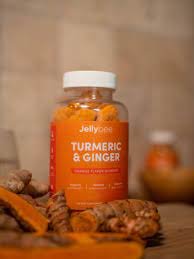Inflammation is an aspect of our body’s defense system. It is the method by which the immune system detects and eliminates foreign and harmful triggers and initiates the process of healing. Inflammation could be chronic or acute.

The number of diseases with an inflammatory etiopathology has been increasing in recent years. The drugs used to treat the symptoms of these inflammatory conditions help to treat the condition while combating life-threatening effects. Furthermore, they’re costly and not readily available in any location. It is imperative to find alternatives to these medicines.
Natural herbs are safe, effective, and more effective as anti-inflammatory agents than synthetic ones. The phytoconstituents work as well and have the same mechanisms of action as synthetic molecules. Furthermore, these all-natural plants are utilized in our everyday routine.
Here are the top 8 herbs from nature that have been anti-inflammatory drugs.
Turmeric in addition to Curcumin
Turmeric ( Curcuma Longa) has been used for centuries in traditional medical practices. The spice’s flavor is made from the rhizomes or roots of a plant that is native to India and other parts of Southeast Asia, and aside from the fact that it gives curry its bright yellow hue, it is well-known for its powerful antioxidant and anti-inflammatory properties.
It is commonly used to fight inflammation, and the bulk of turmeric’s inflammation-fighting powers can be assigned to curcumin. In fact, in the right dose, curcumin may be a more effective home remedy in the anti-inflammatory treatment than common inflammation-fighting medications.
Zingiber Officinale
The ginger ( Zingiber officinale Roscoe) is part of the Zingiberaceae family and is a healing herbaceous perennial cultivar, also known as ginger indigenous to tropical sub-tropical warm as well as humid regions, especially Southeastern Asia, for that the mild climate is ideal for its growth. At present, India is the top ginger-growing nation, followed by China, Japan, Jamaica, Indonesia, and Fiji.
The plant contains a variety of chemicals that contribute to its therapeutic properties, including antiarthritis, antiinflammatory antidiabetic and antifungal, antibacterial, and anticancer.
Rosmarinus officinalis L. (rosemary)
The rosemary ( Rosmarinus officinalis L.) is an evergreen shrub that is found throughout all along the Mediterranean Sea and sub-Himalayan regions.
Rosemary, Rosmarinus officinalis L. (Labiatae) is employed in folk medicine to treat various ailments such as dysmenorrhea, headache stomachache, epilepsy spasms, rheumatic pain anxiety, improvement in memory, hysteria and depression, and emotional and physical exhaustion.
Borago officinalis
Borage is an herb. The leaves and flowers, and the oil extracted from its seeds, are used in medicinal properties.
Borage seed oil can be used to treat skin problems such as eczema (atopic dermatitis) and itchy, red rash over the head (seborrheic dermatitis) as well as a form of skin disease known as neurodermatitis. It is also used for rheumatoid arthritis (RA), swelling of the gums, stress, premenstrual syndrome (PMS), diabetes, attention deficit-hyperactivity disorder (ADHD), acute respiratory distress syndrome (ARDS), alcoholism, pain and swelling (inflammation), asthma, and for preventing heart disease and stroke. Borage oil may be mixed into infant formula in smaller quantities to supply fatty acids to aid the development of preterm infants.
Borage flowers and leaves are utilized to treat cough, fever, and depression.
Borage can also be used to treat an adrenal insufficiency. This is to “blood purification” to improve the flow of urine to reduce inflammation of the lungs as a sedative and to encourage sweating. Borage can also be utilized to boost the production of breast milk as well as to treat colds and bronchitis.
Borage is applied to the skin to treat itchy, red skin rash that occurs on the scalp in infants (seborrheic dermatologtitis) and can also be used as a dressing to soften the skin.
Urtica dioica
The stinging nettle ( Urtica dioica) has been used as a mainstay of herbal medicines since antiquated times.
The ancient Egyptians employed stinging nettle to alleviate lower back discomfort, and Roman soldiers would rub it on themselves to keep warm.
The science-based name Urtica dioica is derived directly from the Latin word “uro” meaning “to burn” since its leaves could create a brief burning sensation after contact.
Inflammation is the body’s method of self-healing and fighting infection.
However, chronic inflammation may cause serious harm.
Stinging nettle contains a range of substances that can help decrease inflammation.
Uncaria tomentosa
The claw of the cat ( Uncaria tomentosa) is a tropical vine that can reach up to 98 feet (30 meters) tall. The name is derived from its hooked thorns that resemble the claws of cats.
It is most prevalent within the Amazon rainforest, but also in the other tropical regions in South as well as Central America.
Osteoarthritis is one of the more frequent joint problems throughout the United States, causing painful and stiff joints.
But, there was no improvement in knee pain at rest or swelling.
A study of eight weeks of supplementation with maca root and cat’s claw a Peruvian medicinal plant- reduced stiffness and pain in patients suffering from osteoarthritis. Additionally, the participants required medications for pain less often.
But after just eight weeks, the gains did not last.
Be aware that further research is needed on osteoarthritis and cat’s claw.
Rheumatoid Arthritis is a chronic autoimmune disease that can cause warm joint swelling and pain.
A few studies suggest that the claws of cats can ease its symptoms.
Like osteoarthritis cat’s claws are believed to lessen inflammation throughout your body and ease the symptoms of rheumatoid arthritis.
While these results look promising, however, the evidence isn’t convincing. More extensive, higher-quality studies are required to prove these advantages.
Bilberry
The Bilberry (Vaccinium myrtillus) is the name of a plant that produces berries that are like the American blueberry. The dried leaves and fruit are used to treat ailments.
The bilberry plant contains tannins that may help ease diarrhea and throat and mouth irritation by decreasing the swelling (inflammation). There is some evidence to suggest that the chemicals in bilberry leaves may help reduce cholesterol and blood sugar levels. Some researchers believe that compounds called flavonoids present in the bilberry leaf could also help improve blood circulation for people suffering from diabetes.
Olea europaea
The extract of olive leaves comes in the form of leaves from the olive plant. It has an active ingredient, the oleuropein. The nutrient is believed to play a role in the antioxidant and anti-inflammatory characteristics of the extract of olive leaves.
Summary:
Natural herbs are effective, safe, and more effective as anti-inflammatory agents than synthetic ones. The phytoconstituents have the same effect with the same mechanisms of action as synthetic molecules. Future research should concentrate on the molecular mechanism of various advantageous applications of these plants for various ailments.
Image Source: Freepik
